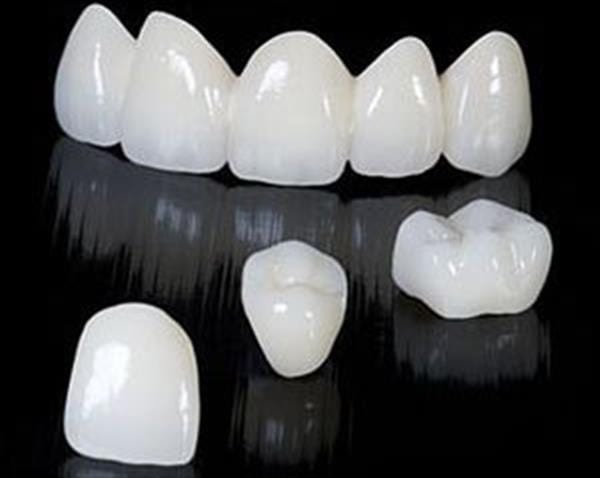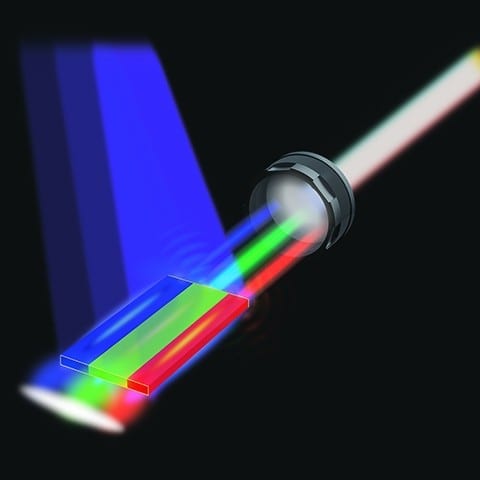
Just last week, we saw how an old Chinese man successfully recovered from a dangerous surgery with the help of 3D printing, but now an even more technological innovation has appeared in China. Yesterday, scientists from the Guangzhou Nansha Additive Manufacturing Technology Research Institute have unveiled a new SLA 3D printing technique that can be used to create detailed porcelain (and other ceramic) objects quickly.
The research team over at the Nansha Additive Manufacturing Technology Research Institute in Guangzhou spent over a year developing this new 3D printer, and is currently in the debugging stage. While the unveiling is expected to take place in the very near future, it has already been leaked to reporters that the 3D printing speed is several times faster than comparable machines, while this 3D printer is also capable of working with a very large variety of materials, including ceramics, metal filler materials and more. Among its possible applications is a the fantastic medical solution of 3D printed porcelain teeth.
According to Xu, traditional SLA 3D printing process comes with three issues. Firstly, the material has high liquidity requirements, and can therefore only be made with a thin material, such as resin and plastic. This means abandoning high viscosity materials. Secondly, the workpiece after forming needs to be scraped – something that requires strong and accurate supports to fix the part, which needs to be subsequently and affects the piece (damaging the surface and so on). This obviously also costs material. And finally, the slow 3D printing speed forms a major bottleneck on the usefulness of SLA 3D printing. Especially the material spreading process takes up to 10 seconds – meaning that the 3D printing of a small object (with thousands of layers, sometimes up to 100,000) takes a very long time.
Xu Xiaoshu argues that their brand new SLA 3D printer will solve all three problems. Firstly, they have made a breakthrough in materials that can be used through high pressure extrusion. This increases the viable viscosity range about five or six times, paving the way for a large number of available materials. Think about ceramics, biomaterials, metal composites and more.
Secondly, due to the use of highly viscous materials the processes of extrusion and formation are separated and there is therefore less need for support materials. Not only does this simplify production and post-print processing, it also reduces costs by about 10 to 20 percent. And thirdly, this also greatly speeds up the 3D printing process in its entirety. Layer extrusion on their upcoming 3D printer takes only a second per layer – cutting the extrusion time down by up to 90 percent. And as layering itself takes up half of the entire printing process, the overall 3D printing speed almost doubles.
The Latest on: 3D printing
[google_news title=”” keyword=”3D printing” num_posts=”10″ blurb_length=”0″ show_thumb=”left”]
via Google News
The Latest on: 3D printing
- British homes could soon be built by 3D printer, expert says in astonishing predictionon May 2, 2024 at 11:11 am
British families could be opting for 3D printed-properties, houseboats and multi-generational homes by 2040 - according to a new AI prediction of future British living. Over the next three decades, AI ...
- 3D Printing Finds a Homeon May 2, 2024 at 8:49 am
“Prefabricated 3D printed homes reduce the amount of labor required to build a home, thereby making homes safer, potentially cheaper, and much faster from design to completion,” says Buff López, an ...
- INTAMSYS Becomes 3D Printing Equipment Supplier for the WORLDSKILLS LYON 2024 COMPETITIONon May 2, 2024 at 7:54 am
INTAMSYS has officially signed a sponsorship contract with WorldSkills Lyon 2024, becoming the supplier of FFF 3D printing equipment for the Mechanical ...
- Study unveils 3D printing PQD-polymer architectures at room temperatureon May 2, 2024 at 7:52 am
A technology enabling the fabrication of intricate three-dimensional (3D) quantum dot (QD)-based structures at room temperature has been developed.
- A 3D Printer On Every Desk? Why Companies Are Buying More 3D Printerson May 2, 2024 at 4:56 am
Entry-level desktop 3D printers saw record sales in 2023. It’s not the number of machines sold that’s surprising; it’s who’s buying them: businesses.
- Grayslake man used 3D printer to make guns, gun parts, sheriff’s police sayon May 2, 2024 at 4:44 am
Once Best was under arrest, police searched his home and seized 64 machine gun conversion devices that appear to have been manufactured using a 3D printer, as well as pistol frames and rifle parts ...
- Teachers at Deer Valley create tool using 3D printer to help a student communicate betteron May 1, 2024 at 9:59 pm
Thanks to a 3D printer, the teachers created a tool for the student that ultimately helped her communicate better. At Deer Valley, their motto is “everyone deserves a voice” and that’s exactly what ...
- Marriage of synthetic biology and 3D printing produces programmable living materialson May 1, 2024 at 6:42 am
Scientists are harnessing cells to make new types of materials that can grow, repair themselves and even respond to their environment. These solid "engineered living materials" are made by embedding ...
- Shhh! 3 Secret 3D Printing Stocks Flying Below Wall Street’s Radaron May 1, 2024 at 3:30 am
InvestorPlace - Stock Market News, Stock Advice & Trading Tips One of the best investment strategies for long-term growth is twofold: pick an ...
- 3D Printing in Biomedical Sensing Technologyon April 30, 2024 at 5:00 pm
3D printing is used to create real-life 3D objects from a digital model, facilitating the realization of ideas and concepts with high accuracy. Various 3D printing technologies exist, including ...
via Bing News










